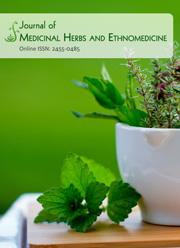Phytochemical Profiling of Amazonian Herbal Medicinal Products: The Role of Traditional Processing Methods
DOI:
https://doi.org/10.25081/jmhe.2019.v5.3832Keywords:
Traditional herbal medicine; mode of preparation; processing methods; herbal recipes; traditional quality standard; ethnopharmaceuticsAbstract
Research on traditional processing methods used to transform plants into medicines offers a valuable arena to investigate the correct formulation of herbal products. While scientific literature on traditional herbal medicines emphasizes the relevance of the taxonomical identification of the used species, the same rigor is not applied to recording the processing methods. In other words, attention is given to the ingredients, but not the recipes. This can not only jeopardize the quality of research on traditional herbal medicines, but also generate concerns once such medicines reach the global markets in compliance with modern manufacturing requirements, which are usually well far away from the traditional ones. In the present work, different traditional herbal medicines used in the region of San Martin, Peru, were analyzed by the means of UPLC-UV/DAD metabolite fingerprinting. Different extracts were prepared from same commercially available materials in order to test the effect of the recipes on the chemistry of the finished products. In particular, different plant parts and their status (fresh or dry), extraction solvents and decoction times were selected for metabolite comparisons between the extracts. In accord with literature data on others traditional pharmacopoeias, our results show how specific manufacturing steps can affect the chemistry of the finished products. Further efforts are necessary to evaluate the traditional herbal practices, whether understandable or not, with modern scientific approaches.
Downloads
References
2. Govindaraghavan, S. and N. Sucher, Quality assessment of medicinal herbs and their extracts: Criteria and prerequisites for consistent safety and efficacy of herbal medicines. Epilepsy & Behavior, 2015. 52(Pt B): 363-371.
3. Verma, N. and S. Shukla, Impact of various factors responsible for fluctuation in plantsecondary metabolites. Journal of Applied Research on Medicinal and Aromatic Plants, 2015. 2(4): 105-113.
4. Sharma, N. and C. Kala, Harvesting and management of medicinal and aromatic plants in the Himalaya. Journal of Applied Research on Medicinal and Aromatic Plants, 2017. in press(https://doi.org/10.1016/j.jarmap.2017.09.003).
5. Callaway, J., G. Brito, and E. Neves, Journal of Psychoactive Drugs. Phytochemical Analyses of Banisteriopsis Caapi and Psychotria Viridis, 2005. 37(2): 145-150.
6. Sheridan, H., et al., Traditional Chinese herbal medicine preparation: Invoking the butterfly effect, in The Art and Science of Traditional Medicine Part 3: The Global Impact of Traditional Medicine. 2015, (6262) Sponsored supplement to Science. p. S53-S85.
7. Zhao, Z., et al., A unique issue in the standardization of Chinese materia medica: processing. Planta Med, 2010. 76(17): 1975-86.
8. Liu, S., et al., A review of traditional and current methods used to potentially reduce toxicity of Aconitum roots in Traditional Chinese Medicine. Journal of Ethnopharmacology, 2017. 207: 237-250.
9. Zhang, Q., http://who.int/medicines/areas/traditional/definitions/en/. 2000(28/06/2017).
10. Callicott, C., Interspecies communication in the Western Amazon: Music as a form of conversation between plants and people. European Journal of Ecopsychology, 2013. 4: 32-43.
11. Radin, D., G. Hayssen, and J. Walsh, Effects of intentionally enhanced chocolate on mood. Explore-the Journal of Science and Healing, 2007. 3(5): 485-492.
12. Shiah, Y. and D. Radin, Metaphysics of the tea ceremony: a randomized trial investigating the roles of intention and belief on mood while drinking tea. Explore-the Journal of Science and Healing, 2013. 9(6): 355-360.
13. Politi, M. and L. Pisani, Traditional pharmaceutical recipes from a metabolomics perspective: Interviews with traditional healers in Mali and comparison with modern herbal medicines Advancement in Medicinal Plant Research, 2014 2(1): 1-6.
14. Cao, H., et al., The application of metabolomics in traditional Chinese medicine opens up a dialogue between Chinese and Western medicine. Phytotherapy Ressearch, 2014. 29(2): 159-166.
15. Brack Egg, A., Diccionario Enciclopedico de Plantas Utliles del Peru. 1999, Cuzco: CBC - Centro de Estudio Regionales Andinos "Bartolomé de Las Casas"
16. Sanz-Biset, J. and S. Cannigueral, Plant use in the medicinal practices known as “strict diets” in Chazuta valley (Peruvian Amazon). Journal of Ethnopharmacology, 2011. 137 271- 288.
17. Politi, M. and F. Friso, Amazonian Medicinal Plants Botanical Garden of Takiwasi Center in Peru; a case report of 25 years’ hands-on experience. Horticulture International Journal, 2018. 2(3): 69?71.
18. Politi, M., F. Friso, and J. Mabit, Plant based assisted therapy for the treatment of substance use disorders - part 1. The case of Takiwasi Center and other similar experiences. Revista Cultura y Droga, 2018. 23 (26): 99-126.
19. Berlowitz, I., et al., Conceptions and practices of an integrative treatment for substance use disorders involving Amazonian medicine: traditional healers’ perspectives. Revista Brasileira de Psiquiatria, 2018. 40(2): 200-209.
20. Bichara Zoghbi, M., J. Oliveira, and G. Skelding Pinheiro Guilhon, The genus Mansoa (Bignoniaceae): a source of organosulfur compounds. Brazilian Journal of Pharmacognosy, 2009. 19(3): 795-804.
21. Patel, I., et al., Phytochemical studies on Mansoa alliacea (Lam.). International Journal of Advances in Pharmaceutical Research, 2013. 4(6): 1823 – 1828.
22. Pires, F., et al., Qualitative and quantitative analysis of the phenolic content of Connarus var. angustifolius, Cecropia obtusa, Cecropia palmata and Mansoa alliacea based on HPLC-DAD and UHPLC-ESI-MS/MS. Revista Brasileira de Farmacognosia, 2017. 27 426-433.
23. Ratti, C., et al., Drying of Garlic (Allium sativum) and Its Effect on Allicin Retention. Drying Technology, 2007. 25: 349-356.
24. Papu, S., et al., Effect of Drying Characteristics of Garlic-A Review. J Food Process Technol 2014. 5(4).
25. Cardoso Santos, M., S. Navickiene, and A. Gaujac, Determination of Tryptamines and ?-Carbolines in Ayahuasca Beverage Consumed During Brazilian Religious Ceremonies. Journal of AOAC International, 2017. 100(3): 820-824.
26. Wagner, H. and G. Ulrich-Merzenich, Synergy research: approaching a new generation of phytopharmaceuticals. Phytomedicine, 2009. 16(2-3): 97-110.
27. This, H., Molecular gastronomy. Angew Chem Int Ed Engl., 2002. 41(1): 83-88.
28. Barham, P., et al., Molecular Gastronomy: A New Emerging Scientific Discipline. Chem. Rev., 2010. 110: 2313-2365.
29. Sacchi, R., et al., Extra virgin olive oil: from composition to "molecular gastronomy". Cancer Treat Res., 2014. 159: 325-338.



 .
.